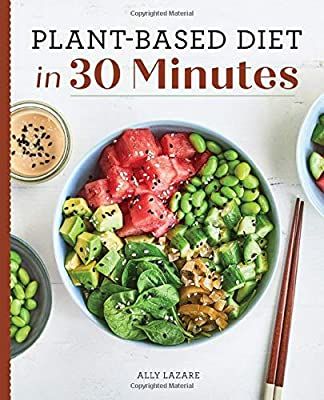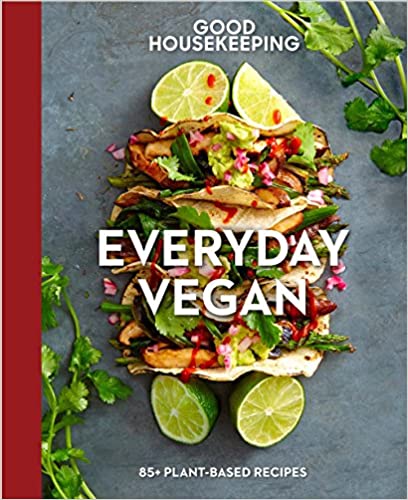
For many, iodine intake is essential. The body uses it for thyroid hormones which regulate metabolism and hormone production. When there is insufficient iodine, people may develop hypothyroidism, which can result in weight gain and fatigue.
Iodine can be found as a trace mineral in various plant foods. However, iodine deficiency is becoming more common in the Western world. This is because people don't eat foods containing iodized sodium.
If you're vegan, it's important to consume enough iodine. It is also a good idea to look for vegan multivitamins which contain iodine. In addition, you may want to consult your doctor to determine if you need to take a supplement.

Some of the best sources of iodine are sea vegetables and fruits. Seaweed is a rich source of iodine, and contains many other essential vitamins and minerals. Seaweed can have varying amounts of iodine. You might get too much or not enough iodine. Make sure you choose carefully.
You can also find iodine from dried sea vegetables or prunes. Dried sea veggies contain 40 to 60 mg of iodine every sheet. 13 mcg of Iodine is found in a half cup of dried prunes. This is enough to meet 8% of the United States' dietary recommendation of 150 mcg a day.
The soil it is grown in determines the amount of Iodine that it has. You may need to supplement your iodine intake by eating plants, which naturally have lower levels of iodine than animal foods. To ensure that you have enough iodine in your diet, it is better to eat more plant foods than animal products. Be sure to read labels. It is important to know that processed foods, as well as commercial salts, do not typically contain iodine. Check out the Beauty Without Bunnies database if you're unsure about which products contain it.
Sea fish is not an ideal source of iodine. It can be contaminated with mercury and dioxins, and it can also contain harmful bacteria and viruses. You might also consider eating fish because they are low in calories and protein.

Iodized salt is another excellent source of the iodine. Most salt found in processed and packaged foods doesn't contain iodine. But, there are some brands that have it. A third teaspoon of salt has 100 g of iron and 774 mg of sodium.
Many vegan bread brands include iodine fortification. Look carefully at the ingredients label and consider if the multivitamin contains iodine. This is essential because vegans often have iodine deficiencies. You might also want to add sweet berries to the diet. They are high in vitamin Iodine. They are also a great source for iron.
FAQ
How do I count calories?
You may wonder, "What diet is best for you?" or "is counting calories necessary?" This depends on several factors like your current health and personal goals. Your preferences and overall lifestyle.
The Best Diet for me - Which One Is Right for You?
The best diet is dependent on my current health status, personal goals, preferences, and overall lifestyle. There are many diets available, some good and others not so good. Some diets work better than others. What can I do to make the right choice? How do I make the right choice
These are the questions this article will answer. This article begins with a brief overview of the various types of diets that are available today. Next, we'll discuss the pros and cons for each type of diet. We'll then discuss how to choose which one is best for you.
Let's first take a look at different diets.
Diet Types
There are three main types of diets: low fat, high protein, and ketogenic. Let's take a look at them all below.
Low Fat Diets
A low fat diet reduces the amount of fats you eat. This is accomplished by decreasing the intake of saturated fats like butter, cream cheese, and other dairy products. and replacing them with unsaturated fats (olive oil, avocados, etc.). People who are looking to lose weight quickly and easily will benefit from a low-fat diet. However, this kind of diet may cause problems such as constipation, heartburn, and indigestion. In addition, it may lead to vitamin deficiencies if a person doesn't get enough vitamins from their food.
High Protein Diets
High protein diets restrict carbohydrates in favor of proteins. These diets are more protein-rich than others. They are meant to help build muscle mass and burn more calories. One problem is that they may not provide adequate nutrition to someone who needs it. Also, they tend to be very restrictive, so they aren't suitable for everyone.
Ketogenic Diets
Also known as keto diets, ketogenic diets are also called keto diets. They are high fat and moderately carbohydrate and protein-rich. They are commonly used by athletes and bodybuilders as they allow them to train harder, longer and without feeling fatigued. You must adhere to all side effects such nausea, headaches, fatigue.
Which 10 foods are your favorite?
The top 10 best foods are:
-
Avocados
-
Berries
-
Broccoli
-
Cauliflower
-
Eggs
-
Fish
-
Grains
-
Nuts
-
Oats
-
Salmon
How does weight change with age?
How can you determine if your bodyweight is changing?
If there are less calories than muscle mass, then weight loss is possible. This means that daily energy needs must be greater than the calories consumed. Activity levels are the most common reason for weight loss. Others include pregnancy, hormonal imbalances or certain medications. When more fat is consumed than muscle mass, weight gain occurs. It happens when people eat more calories than they use during a given day. It can be caused by overeating or increased physical activity as well hormonal changes.
We eat less calories than we burn, which is the main reason our bodies lose weight. When we exercise regularly, we increase our metabolism rate which burns off more calories throughout the day. But this doesn't guarantee that we'll lose weight. The important thing is to see if we're losing or gaining muscles. If we're burning more calories that we consume, we'll lose weight. But if we're consuming more calories than we're burning, then we're actually storing them as fat.
As we get older, our movement speed slows down and so we move less. We also tend not to eat as much food as we used to when we were younger. As a result, we gain weight. On the flipside, we are more muscular than we really need and appear larger.
There's no way to tell how much weight you've lost unless you weigh yourself every week. There are many ways you can measure your weight. There are several ways to check your waist size. Some people prefer using bathroom scales and others prefer tape measures.
For a better track of your progress, try to weigh yourself once per week and measure your waistline once every month. You can also take photographs of yourself every few years to track how far your progress has been.
Online measurements of your height, weight and body mass can help you determine how much. For example, if your height is 5'10", and your weight is 180 pounds, then you'd probably be 180 pounds.
What's the difference between fat/sugar?
Fat is an energy source from food. Sugar is naturally found in fruits and veggies. Both sugars and fats have the same calories. Fats have twice the calories of sugars, however.
The body stores fats and they can lead to obesity. They can increase cholesterol levels in the arteries and cause strokes and heart attacks.
Sugars provide instant energy and are rapidly absorbed by the body. This causes blood glucose levels rise. High blood glucose levels can be dangerous because it increases the risk of developing type II diabetes.
What is the problem?
BMI stands For Body Mass Index. It is a measurement of body mass based on height and/or weight. Here is how to calculate BMI using the following formula.
Divide the weight in kilograms by the height in meters squared.
The result can be expressed as a number, ranging from 0 through 25. A score of 18.5 or higher indicates overweight, while a score of 23 or higher indicates obesity.
A person of 100kg with a height of 1.75m will have 22 BMI.
Statistics
- According to the 2020 Dietary Guidelines for Americans, a balanced diet high in fruits and vegetables, lean protein, low-fat dairy and whole grains is needed for optimal energy. (mayoclinichealthsystem.org)
- nutrients.[17]X Research sourceWhole grains to try include: 100% whole wheat pasta and bread, brown rice, whole grain oats, farro, millet, quinoa, and barley. (wikihow.com)
- The Dietary Guidelines for Americans recommend keeping added sugar intake below 10% of your daily calorie intake, while the World Health Organization recommends slashing added sugars to 5% or less of your daily calories for optimal health (59Trusted (healthline.com)
- This article received 11 testimonials and 86% of readers who voted found it helpful, earning it our reader-approved status. (wikihow.com)
External Links
How To
What does "vitamin" actually mean?
Vitamins are organic substances found naturally in food. Vitamins are essential for our bodies to absorb nutrients from the foods we eat. Vitamins are not made by the body, so they must be obtained through food.
There are two types: water-soluble and fat-soluble vitamins. Water-soluble vitamins dissolve in water easily. You can find vitamin C,B1 or thiamine, B2 or riboflavin and B3 or niacin. B6 is pyridoxine. Folic acid, biotin and pantothenic are some examples. The liver and fat soluble vitamins are stored in fatty tissue. Examples include vitamin D, E, K, A, and beta carotene.
Vitamins can be classified by their biological activity. There are eight main groups of vitamins.
-
A - essential for normal growth and maintenance of health.
-
C - essential for proper nerve function, and energy production.
-
D - Essential for healthy teeth and bones.
-
E - needed for good vision and reproduction.
-
K - Required for healthy nerves and muscles.
-
P – Vital for building strong bones.
-
Q – aids digestion and absorption.
-
R is required for the production of red blood cells.
The recommended daily intake (RDA), of vitamins varies with age, gender and physical conditions. The U.S. Food and Drug Administration (FDA) sets the RDA values.
For adults aged 19 or older, the RDA of vitamin A is 400mg per day. For fetal development, pregnant women require 600 micrograms per daily. Children ages 1-8 require 900 micrograms per day. Infants below one year of age need 700 micrograms daily. But, between 9 months to 12 months of age, the amount drops to 500micrograms per days.
Children aged 1-18 require 800 micrograms of sugar per day, while those who weigh more than 1200 need 1000. For their nutritional needs, underweight children need 1200 mg per day.
Children aged 4-8 years old who have been diagnosed as having anemia require 2200 micrograms of vitamin C per day.
2000 micrograms are required daily for good health in adults over 50. Mothers who are pregnant, nursing, or have a high nutrient need will require 3000 micrograms a day.
1500 micrograms is the recommended daily intake for adults aged 70+, as they lose 10% of their muscle every ten years.
Women who are pregnant, nursing or breastfeeding need more than the RDA. Pregnant women need 4000 micrograms per dayduring pregnancy and 2500 micrograms per day after delivery. Breastfeeding mothers require 5000 micrograms daily when breast milk production is occurring.